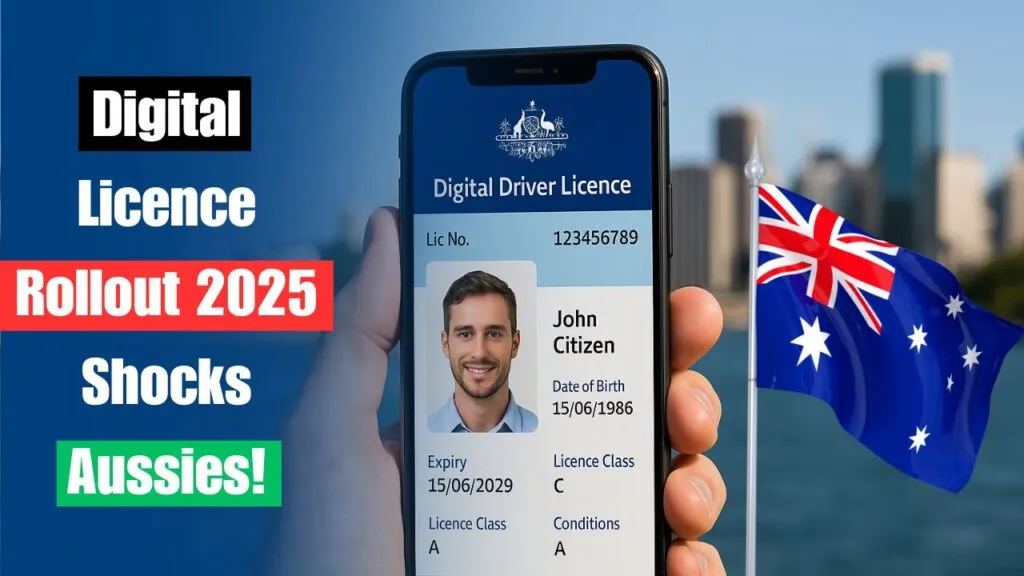Australia is set to enter a new era of identification in 2025 as every jurisdiction adopts a Digital Driver Licence (DDL) system. This nationwide rollout follows years of trials and local initiatives, aimed at streamlining identification, cutting plastic waste, and providing Australians with a secure, convenient digital option. While some states are already ahead, others are preparing for phased introductions throughout 2025. Here’s a detailed look at how each state and territory is implementing the digital licence and what it means for drivers.
New South Wales and Queensland Leading the Shift
New South Wales (NSW) has been the most successful early adopter of the DDL, with over 4 million residents already using it through the Service NSW app. The app allows drivers to present their licence offline and includes dynamic QR codes for validation. This system is fully integrated statewide and accepted by law enforcement, bars, and retail outlets. NSW residents can expect expanded linking options in 2025, including potential integration with future national digital ID schemes.
Queensland, meanwhile, is expanding its Digital Licence program after pilot testing in Townsville and other regions achieved positive results. By mid-2025, the Queensland Digital Licence app will be available across metropolitan and regional areas. The app will consolidate various credentials such as marine licences and proof-of-age cards, offering flexibility and convenience. Security remains a key focus, with encrypted storage and regular updates to safeguard personal information.
Victoria, South Australia, and Western Australia Gearing Up
Victoria is preparing to roll out its Digital Driver Licence by July 2025, developed in partnership with VicRoads. The state’s version will focus on linking with emergency services and transport systems, ensuring real-time updates for both drivers and authorities. Victorians will also be able to access their DDL via a secure app expected to offer offline functionality similar to NSW’s model.
South Australia (SA) already operates a digital ID through its mySA GOV app, but the state is now upgrading both app security and user experience. These updates will enable faster licence verifications and enhanced fraud protection. The goal is to make the 2025 version of SA’s digital licence fully compliant with national ID standards, ready for future integration into Australia’s unified digital ecosystem.
Western Australia (WA) is slightly behind in its rollout timeline, focusing on back-end infrastructure and software testing. The state will begin pilot phase trials toward late 2025, with the WA Licensing App serving as the digital platform. Priorities for WA include ensuring accessibility in remote regions and aligning with federal cybersecurity benchmarks before public release.
Tasmania, ACT, and Northern Territory Joining the National Transition
Tasmania is planning its first DDL trials in mid-2025, starting in Hobart and Launceston. The TasGov App will host the licences, with statewide access expected in early 2026. Authorities are working to ensure that digital verification systems across key services are compatible with the new technology and accessible to older residents.
The Australian Capital Territory (ACT) continues its path toward broader digital transformation through the upcoming ACT Digital Wallet, scheduled for mid-2025. This platform will combine multiple IDs—from driver licences to working-with-children checks—into one seamless interface. The ACT’s emphasis is on efficiency and simplified service access for residents.
The Northern Territory (NT) is upgrading its existing services app to accommodate digital driver licences by late 2025. With vast remote regions, the NT faces unique connectivity challenges, so offline accessibility will be a major feature. Outreach campaigns are also planned to help remote users adopt the technology safely and effectively.
Key Benefits and Driver Responsibilities
The shift toward DDLs is expected to significantly improve flexibility, reduce administrative delays, and lessen environmental impacts. Drivers will benefit from the ability to update personal details instantly and regain licence access easily if they lose their physical card. Beyond convenience, the digital format supports sustainability by cutting down plastic waste and paper processing.
For law enforcement, the rollout brings enhanced efficiency. Police and authorised officers across all states are being trained to verify digital licences using secure QR readers, even in low-signal areas. This reduces the risk of false identification and streamlines roadside checks.
However, digital licence holders will take on new responsibilities. Keeping mobile devices charged and secure becomes essential since access to the DDL relies on functional smartphones. Users should protect their apps with biometric login or PIN authentication and update the software regularly to maintain system security.
Coexistence and Nationwide Timeline
During the transition phase, both physical and digital licences will remain valid until at least 2026. Drivers can choose their preferred format, though digital adoption is encouraged for faster renewals and real-time updates.
Here’s where each state stands as of 2025:
- NSW: Fully rolled out via Service NSW (Completed)
- Queensland: Active rollout through Queensland Digital Licence (Mid-2025)
- Victoria: Launch via VicRoads App (July 2025)
- South Australia: Upgrading mySA GOV app (2025 updates)
- Western Australia: Pilot testing WA Licensing App (Late 2025)
- Tasmania: Trial phase using TasGov App (Q2 2025)
- ACT: Developing ACT Digital Wallet (Mid-2025)
- Northern Territory: Preparing NT Services App (Late 2025)
The Road Ahead
Australia’s move toward fully digital driver licences represents a major leap into a connected, greener future. By 2026, most Australians will be able to carry their driving credentials securely on their phones, with the option to retire plastic cards entirely. As each state integrates with national digital ID frameworks, the DDL will play a crucial role in secure identity verification, travel, and everyday services—reshaping how citizens interact with their government and the world around them.
